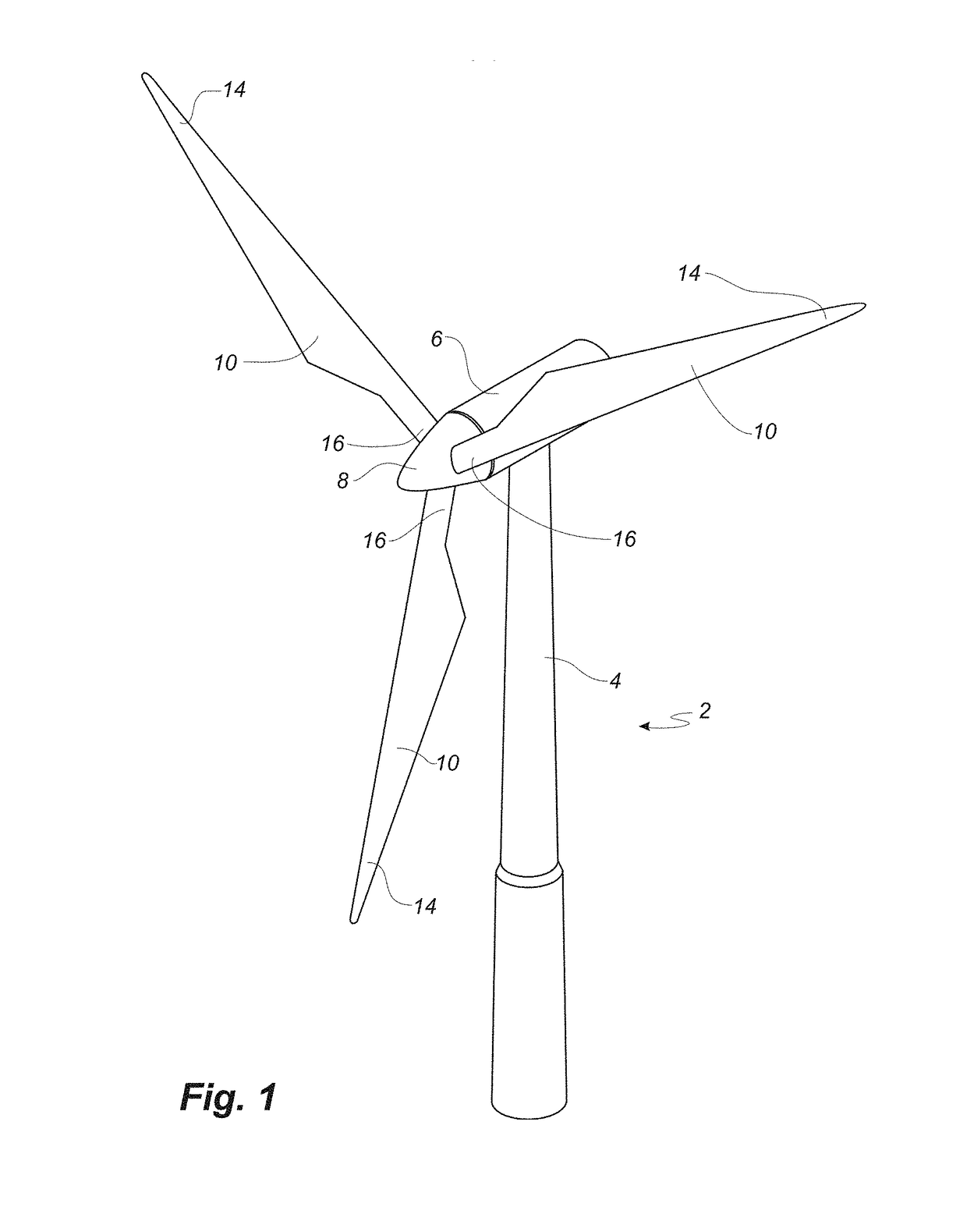Wind turbine blade having a bond line adjacent a sandwich panel of the blade
a technology of bond line and blade, which is applied in the manufacture of final products, machines/engines, other domestic articles, etc., can solve the problems of reducing the possibility of crack initiation in the adhesive joints of the bond line between the blade shell and the blade structure, and reducing the strength of the blade structure. , to achieve the effect of reducing the amount of core material used, saving core material, and costing less to manufactur
- Summary
- Abstract
- Description
- Claims
- Application Information
AI Technical Summary
Benefits of technology
Problems solved by technology
Method used
Image
Examples
Embodiment Construction
[0037]Embodiments of the invention will now be described, by way of example only, with reference to the accompanying drawings, in which:
[0038]FIG. 1 shows a wind turbine;
[0039]FIG. 2 shows a schematic view of a wind turbine blade according to the invention;
[0040]FIG. 3 shows a schematic view of an airfoil profile of the blade of FIG. 2;
[0041]FIG. 4 shows a schematic view of the wind turbine blade of FIG. 2, seen from above and from the side;
[0042]FIG. 5 illustrates a cross-sectional view of a wind turbine blade having a sandwich panel construction;
[0043]FIG. 6 illustrates an enlarged view of a prior art trailing edge structural bond of a wind turbine blade; and
[0044]FIG. 7 illustrates an enlarged view of a trailing edge structural bond of a wind turbine blade according to the invention.
[0045]It will be understood that elements common to the different embodiments of the invention have been provided with the same reference numerals in the drawings.
[0046]FIG. 1 illustrates a convention...
PUM
| Property | Measurement | Unit |
|---|---|---|
| length | aaaaa | aaaaa |
| length | aaaaa | aaaaa |
| thickness | aaaaa | aaaaa |
Abstract
Description
Claims
Application Information
 Login to View More
Login to View More - R&D
- Intellectual Property
- Life Sciences
- Materials
- Tech Scout
- Unparalleled Data Quality
- Higher Quality Content
- 60% Fewer Hallucinations
Browse by: Latest US Patents, China's latest patents, Technical Efficacy Thesaurus, Application Domain, Technology Topic, Popular Technical Reports.
© 2025 PatSnap. All rights reserved.Legal|Privacy policy|Modern Slavery Act Transparency Statement|Sitemap|About US| Contact US: help@patsnap.com



